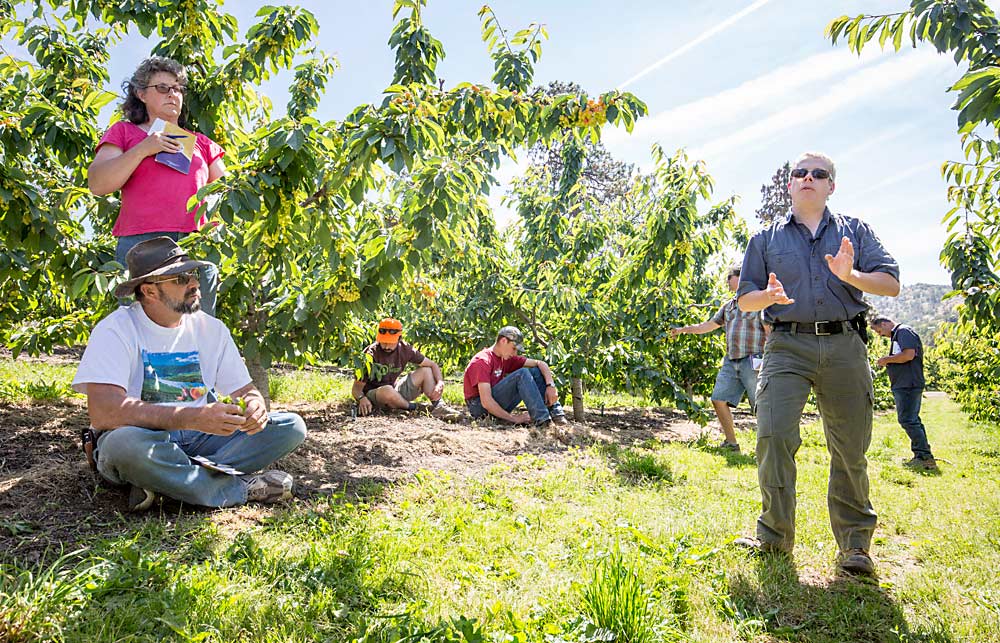
Rising labor costs. Trade problems. X disease.
Growing cherries is hard.
This year, growers must do it all from 6 feet away as the new coronavirus outbreak throws even more challenges into an already chaotic industry.
But, if anybody is used to uncertainty, it’s cherry growers. Experienced growers have seen tough times before and believe the industry can and will struggle through its current challenges, with optimism.
Cherries demand that.
“You have to be resilient every day, every year, every season,” said Laura Mrachek, a Wenatchee, Washington, orchardist.
Mrachek was among a cohort of veteran Northwest growers who talked with Good Fruit Grower this spring about the challenges facing the cherry industry and the solutions that lie in technology, resilience and strategic planning. A few themes emerged…
Mechanize
Labor costs will only keep going up, so seek new tools. Hedging is one, but the industry should resume its search for mechanical harvesting, Mrachek said. Washington State University has worked on a shake-and-catch system in the past.
Jim Doornink, a grower in Wapato, Washington, and longtime chairman of the Washington Tree Fruit Research Commission, agreed. Mechanical cherry harvesting has been an item on the commission’s technology road map for roughly two decades. “I think we’re paying the price for not having worked on that mech the whole time,” he said.
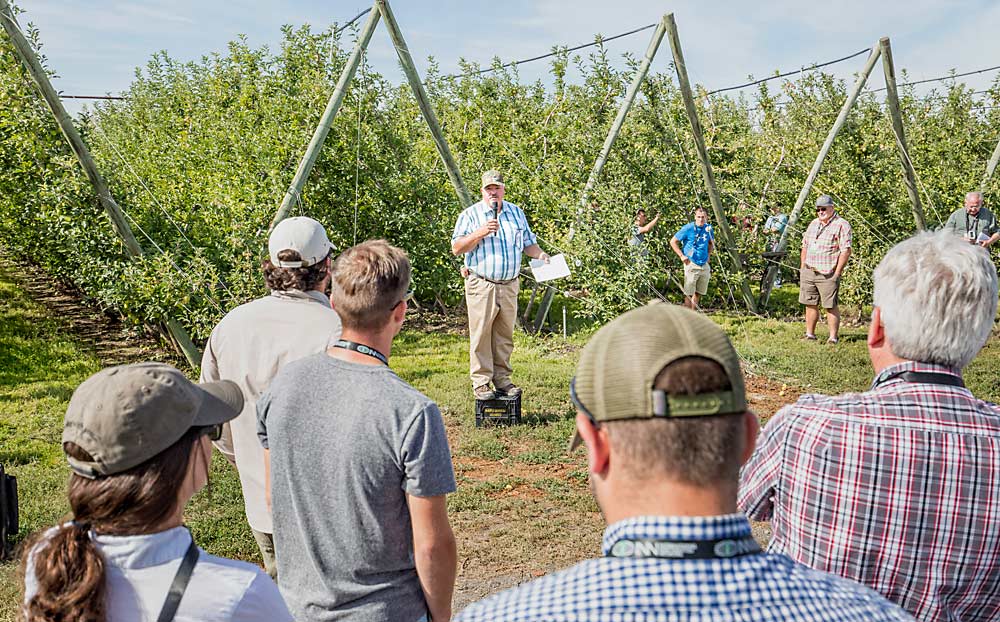
H-2A is here to stay
Until there’s a breakthrough in mechanical harvest, H-2A labor will continue to play a key role, Mrachek said. It’s the only option the industry has now.
The industry has dealt with labor difficulties before. She has fond memories of developing on-farm labor camps for families, when growers built playgrounds and held activities such as volleyball for kids she saw year after year. Those were tough investments, but the industry was better for it, she said.
The H-2A program is expensive and imperfect, said Mike Omeg, director of business operations at Orchard View in The Dalles, Oregon. The alternative is worse, however.
“The most expensive labor is labor that you need but don’t have,” Omeg said.
His company is only a couple of years into utilizing H-2A labor, but it plans to continue. Mechanization developments won’t make a dent in labor needs for decades, Omeg said, so the industry needs to engineer orchards and businesses around the stability of H-2A labor.
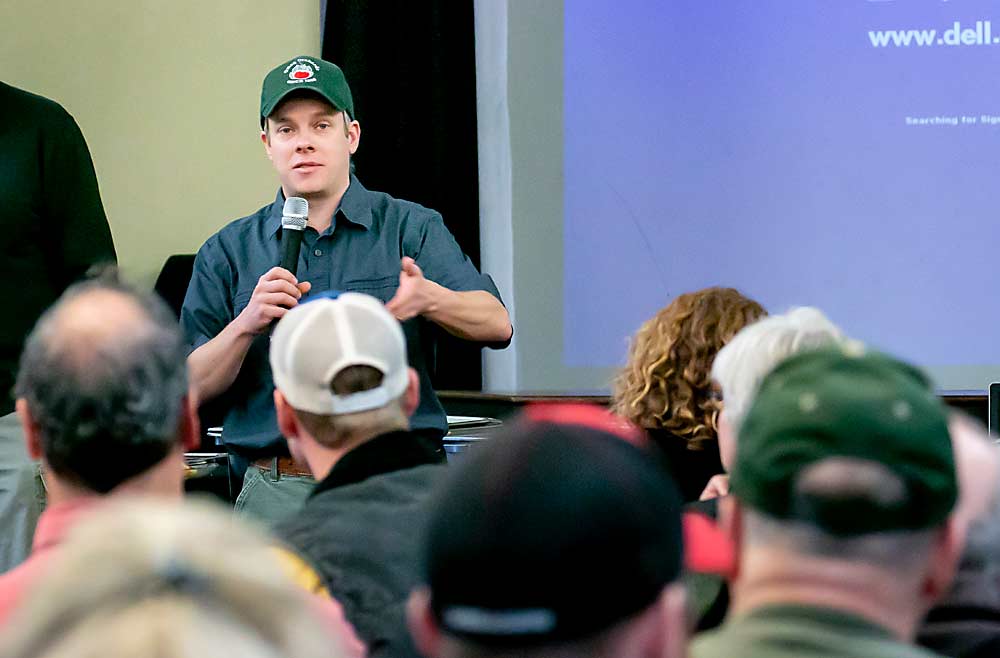
Variety is good
Third-generation grower Dennis Jones of Zillah, Washington, remembers when his farm needed upward of 250 workers to pick all his family’s Bings in about 10 days. These days, his farm has 10 different varieties with a harvest stretched over four weeks. His peak crew is 100 people.
The industry will produce more varieties, as breeders continue to search for large, durable cherries that hit the right market windows. Don Olmstead Jr. of Grandview is a convert. He was once reluctant to undertake the investment of changing varieties. Shoppers didn’t care about them, so why should he? “But the new ones seem to be working,” he said.
Doornink believes, in 20 years, the industry will have a cherry resistant to powdery mildew and a cherry equivalent to the Honeycrisp apple, a fruit so attractive that shoppers will flock to it. It’s only a matter of time. The genes are there and breeders will find the right combination. However, if the industry does come up with an exciting variety, growers and marketers must resist the urge to overpromise in the early years, he cautioned.
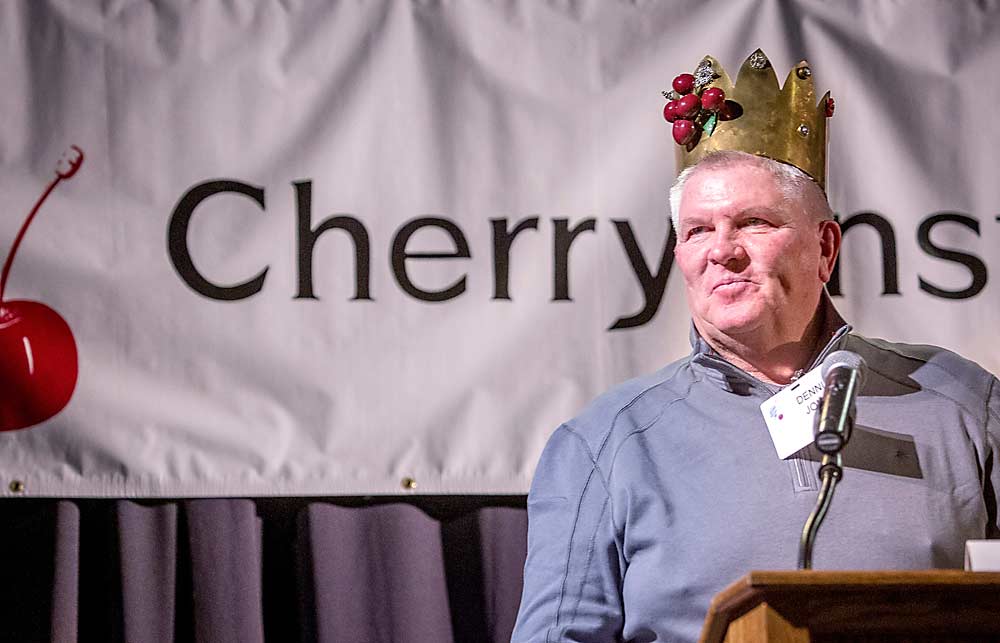
X disease is manageable
The phytoplasma pathogen that causes X disease — often referred to under the umbrella term little cherry disease — is not new. Washington, as well as British Columbia and California, suffered outbreaks in the past and recovered. “We just have to learn how to manage with it in the neighborhood,” Doornink said.
The plan has always been the same: Remove infected trees right away and control the vectors. Jones remembers his grandfather giving him the same advice, dating from the 1950s. He has removed entire blocks. “If we have sick trees at all, we don’t mess around with them or try to save their lives,” he said.
Mrachek urged growers to be honest with lenders about X disease. Block removal requires rainy day cash. “Tell them the truth,” she said. “It’s going to show up on an expense line.”
Mrachek is also the business development director for Eurofins Cascade Analytical, which has laboratories in Yakima and Wenatchee. Her laboratories are gearing up to begin commercial screening for the X disease pathogens in June, which should speed up the process for growers and scale up the industry’s capacity to test and remove trees faster.
Growers can take action against diseases and pests, unlike markets and politics, Olmstead said. “Those things we can control and act on,” he said.
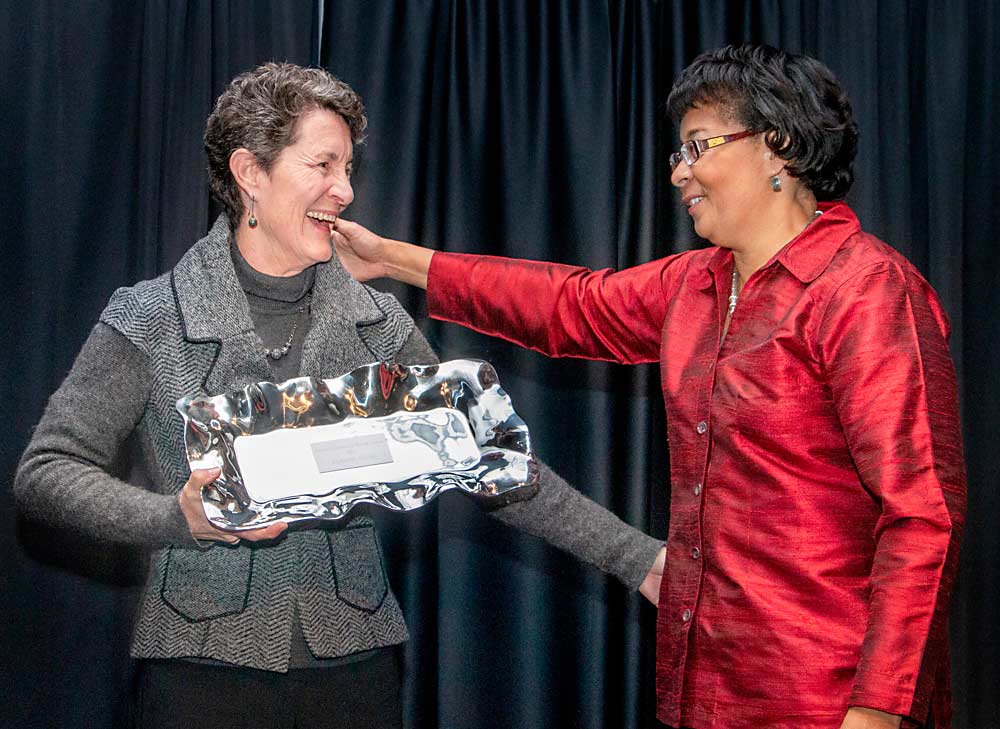
Trade problems are temporary
With coordination, trade and market problems can be overcome. The industry has done it before. When Olmstead started in the 1970s, the industry produced just a fraction of the cherries it does today. But the marketers still find store shelves for all the new volume in what he considers a wonder of communication. “All of that has to be so timely, and it’s complicated, too,” he said.
Asian export markets gave growers a shot in the arm, too — something Doornink at first didn’t trust. He just couldn’t envision the industry shipping perishable cherries to developing countries, but he was pleasantly surprised when he realized how successful the fruit was, just by reaching the port cities. “Often times these foreign markets treat your fruit like a prize,” he said. “It’s really fun to see your fruit revered.”
Get involved
Jones, a longtime board member for the nearby Zillah School District, laments that people in general don’t volunteer the way they used to. Ask any Lions Club. That goes for industry positions, too. He has served on subcommittees for the Washington Tree Fruit Research Commission and is still a member of the Cherry Institute, the annual January industry gathering in Yakima. “I always thought of it as a great way to learn,” he said.
Olmstead agreed. He spent many years on the Washington State Fruit Commission, which manages Northwest Cherry Growers, starting at the age of 33. He considered himself lucky to have the slot. “That gave me a much broader vision of the entire industry, much more than just being a grower,” he said.
Mrachek, Omeg and Doornink have their own lengthy industry-service resumes, too.
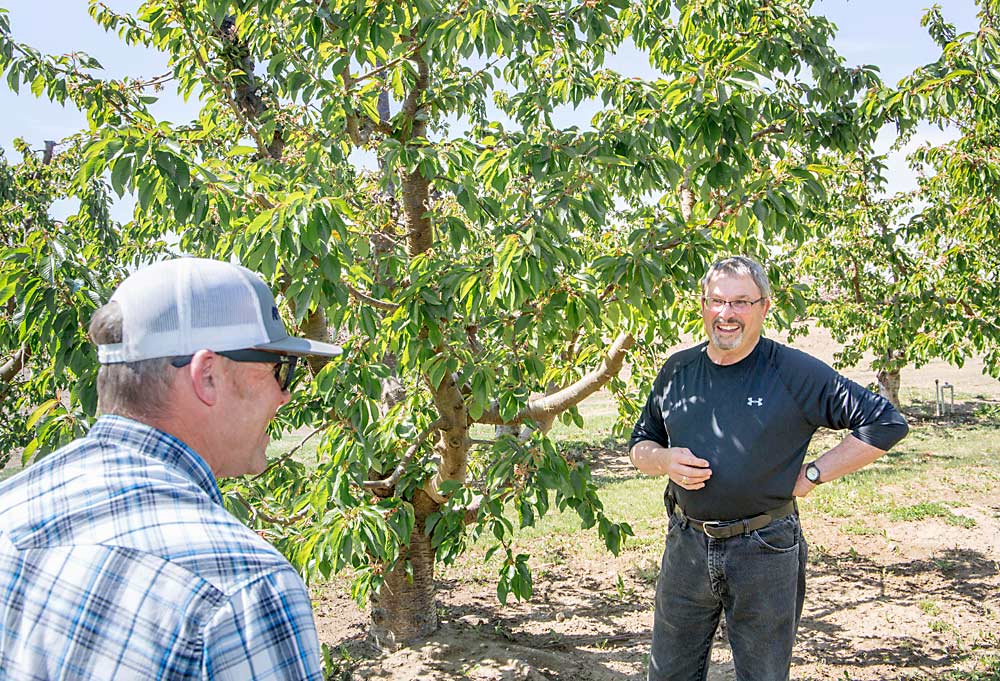
It’s about business
Omeg, of Orchard View, supports the drive for new varieties, innovative systems and horticultural efficiency, but for a farm business to be successful, the bottom line has to come first. He believes the industry first and foremost needs a stronger emphasis on data-driven strategic planning to ensure long-term economic health.
“And that’s not as fun,” he said. “That’s not the stuff that a lot of us as farmers enjoy.”
Omeg has such a decision under his own belt. In 2018, after a lot of deep thought, the fifth-generation cherry grower merged his farm with neighboring, vertically integrated Orchard View to make sure his family could stay in the cherry business.
Omeg judges success by profitability per acre. He has removed Regina blocks because their size and high packouts were not enough to outweigh the sheer yield of Sweethearts. His parents, who judged success by their pride in attractive fruit, were aghast.
Elsewhere, he has pulled out blocks of 10-year-old Bentons producing 2 tons per acre that were not earning as much as a neighboring 20-year-old block of Bings yielding more than 5 tons per acre.
All because the balance sheet said so.
“You have to take the emotion out of it,” he said.
—by Ross Courtney






Leave A Comment